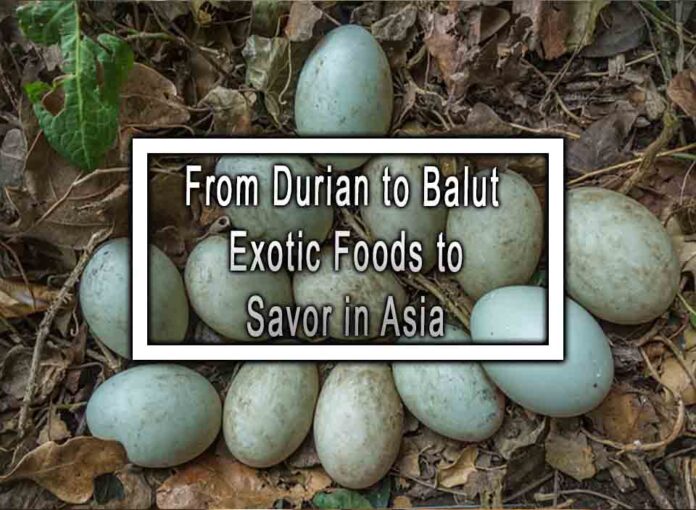Asia is known for its diverse and unique culinary traditions, offering a wide array of exotic foods that adventurous eaters can savor. Here are some notable exotic foods to try in Asia:
1. Durian (Southeast Asia)
– Known as the “king of fruits,” durian is infamous for its strong odor and custard-like texture. Loved by many and despised by some, this tropical fruit has a creamy and sweet taste that is either relished or reviled.

2. Balut (Philippines)
– Balut is a fertilized duck or chicken egg with a developing embryo inside, typically boiled and eaten as a street food snack. It has a rich, creamy texture and a distinct flavor. Balut is considered a delicacy in the Philippines.
3. Century Egg (China)
– Century egg, also known as preserved egg or thousand-year-old egg, is made by preserving duck, chicken, or quail eggs in a mixture of clay, ash, salt, quicklime, and rice hulls for several weeks or months. The result is a translucent egg with a creamy and gelatinous texture and a strong flavor.
4. Stinky Tofu (East Asia)
– Stinky tofu is a fermented tofu dish popular in various East Asian countries. The tofu is soaked in a brine made of fermented milk, vegetables, and sometimes fish for several days, resulting in a strong and pungent aroma. Despite its odor, it has a unique and savory taste.
5. Sannakji (South Korea)
– Sannakji is a dish made from live octopus, sliced into small pieces and served immediately. The tentacles are still moving when served, creating a unique dining experience. It’s usually seasoned with sesame oil and served with dipping sauces.
6. Snake Wine (Southeast Asia)
– Snake wine is an alcoholic beverage made by infusing whole snakes, usually venomous ones, into rice wine or grain alcohol. It is believed to have medicinal properties and is often consumed as a traditional remedy or as a novelty item.
7. Hákarl (Iceland)
– Although not in Asia, hákarl is an exotic food often associated with Iceland. It is fermented shark meat, specifically Greenland shark. The meat is buried and fermented for several months, then hung to dry for several months more. Hákarl has a strong ammonia smell and a chewy texture.
It’s important to note that these foods may not be for everyone due to their distinct flavors, textures, or cultural associations. When trying exotic foods, it’s advisable to be aware of any dietary restrictions, allergies, or health concerns and to consume them from reputable sources that follow proper food handling and preparation practices.










